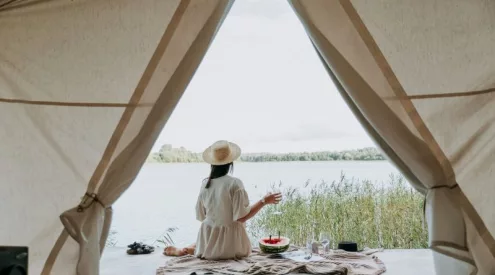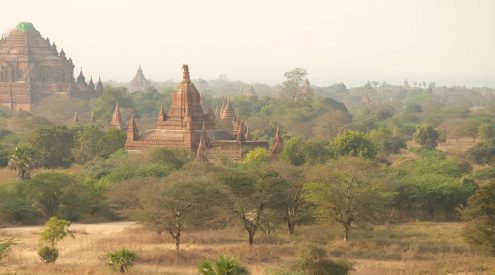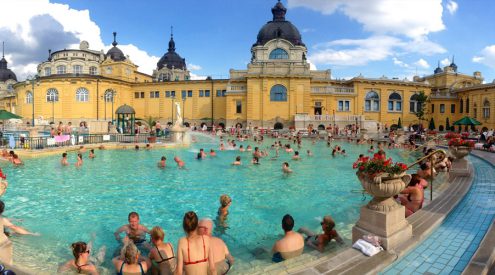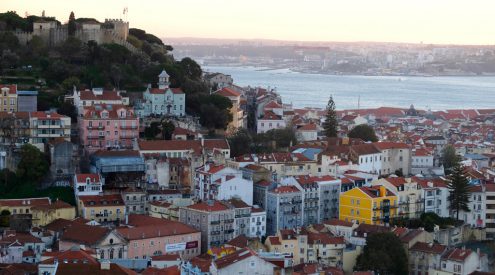Tasmania appeals to the wilderness in your imagination. I’ve had this fascination with wild far-off places like Tasmania since childhood. You don’t realize how big the island is until you get there. Slightly smaller than Ireland, it has many fascinating destinations like Bruny Island, Maria Island or Flinders Island lying off its shores. Islands off an island. Tasmania feels like another country, a long way from Australia.
The road signs in Tasmania warn “Expect the unexpected!” I spent most of May 2013 on assignment in Tasmania. The island is the Alaska of the southern hemisphere – famous for its great outdoors and wildlife. I’d always wanted to do an overland trip through the Unesco world heritage wilderness areas of Cradle Mountain, the wild river Franklin-Gordon park and the Tarkine. Some 40% or 25 000 square kilometres of the island state are put aside for national parks with some 2000 km of hiking trails.
Hobart
Hobart is a major gateway for expeditions to the Antarctic – and around Tasmania. The waterfront has bronze statues of the early brave explorers who set off from here.
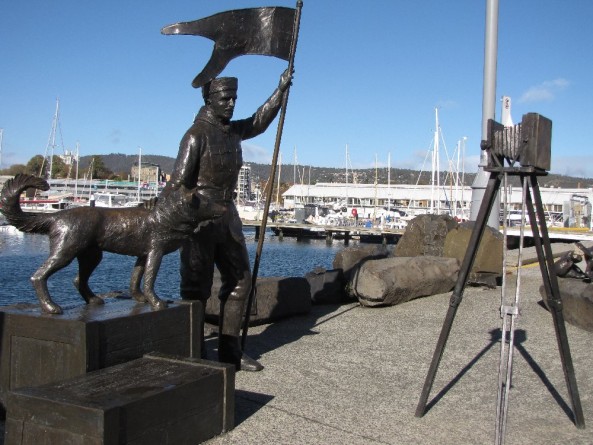
Bronzes of early Antarctic explorers on Hobart waterfront
Before setting out overland I spent a week based in scenic Hobart. The town (250 000 people – or half of Tasmania’s population) lies at the foot of snow-capped Mount Wellington (1270m) which sprawls along the banks of the Derwent River. Rated the third most photogenic city in the world by Lonely Planet Guide, Hobart has a very maritime feel – from the busy yacht marina and fishing boat docks in the downtown waterfront to the old sandstone Georgian warehouses in the Sullivans Cove precinct inhabited by trendy cafes, art studios, galleries, restaurants and book shops today.
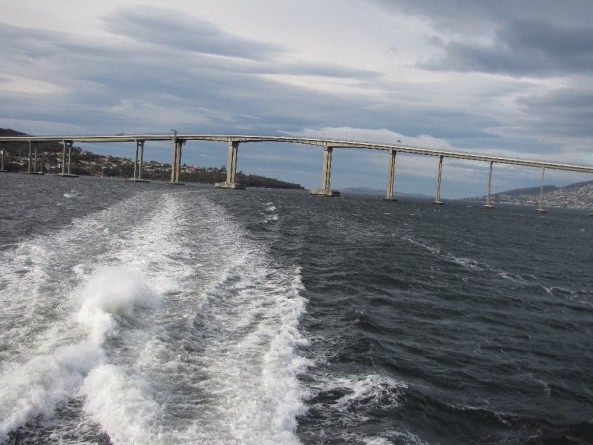
Heading up the Derwent River in Hobart
I stayed at the Henry Jones Art Hotel in a historic precinct of the waterfront. Rated one of the top luxury boutique hotels in Australia, it is set in a renovated old IXL jam factory – once the biggest in the southern hemisphere. Captain Cook planted the first apples in Tasmania in the 1770s which grew into a massive industry. I’m told the city residents used to smell the air and say, “It’s an apple jam or raspberry day today!” as the scent of jam-making wafted around the harbour. They still have the giant pots – and posters of all the jam labels at the IXL Long Bar which gets “jam-packed”, ha ha.

Hobart Waterfront, Tasmania
I also stayed at the Old Woolstore Hotel – a frequent Qantas Australian tourism winner conveniently located downtown – which offers superb, affordable family accommodation in self-catering luxury apartments – set in one of the main old wool sheds, complete with displays of fleeces on the old wool trade – and the Baaaa Bar!
My first destination was Mona, the Museum of Old & New Art, the biggest new attraction in Tasmania. Opened in January 2011 at Moorilla winery on the Derwent River on the outskirts of Hobart, it contains one of the biggest and most unusual post-modern art collections in the world. Some 750 000 visitors have come from all over the world to visit this avant-garde gallery excavated underground into a cliff-face and built at a cost of A$75m (R75m). I took a 45 minute ferry ride on the Mona ferry – itself decorated with art and graffiti – from the Hobart pier on the main waterfront.
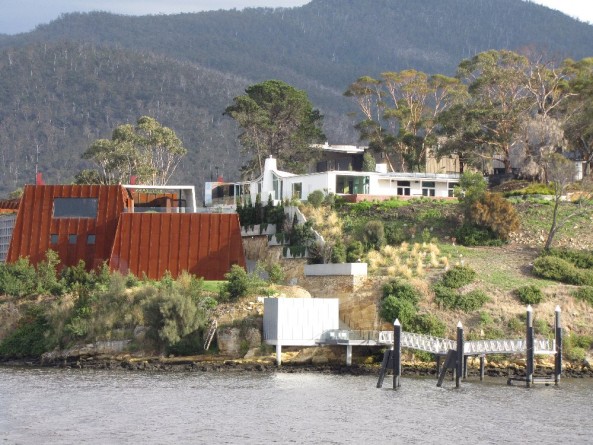
MONA, Museum of Old and New Art, Hobart, at Moorilla Winery
Owner David Walsh, one of the world’s richest gamblers, who funded it all – a complex of bars, restaurants, winery, villas and art gallery – calls it “a subversive adult Disneyland”. It houses his own priceless collection of quirky installations on the themes of sex, love and death by the likes of Damian Hirst and Sidney Nolan (a giant rainbow snake) – as well as a working replica of a giant digestive tract (cloaca) which gets fed daily, ancient mummies and bit.waterfall, the world’s biggest water printer.
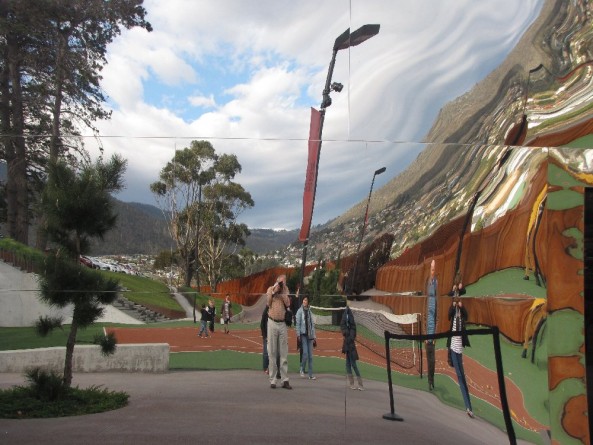
The zany entrance to MONA, Museum of Old and New Art
I was also fascinated by the new TMAG – the Tasmanian Museum & Art Gallery, which reopened in mid-March this year after an A$30m (R300m) makeover. Australia’s second oldest museum founded in 1843 fills an entire city block near the waterfront. The many galleries are set in a cluster of the oldest Georgian sandstone buildings in Tasmania- the commissariat store (1810), the old bond store (1826) and the city’s old Watergates where tall ships used to offload supplies in the 1800s.
TMAG is a very modern take on a museum – with 100 objects on display which tell “stories of Tasmania that move you” – through exhibits on the tragic story of the extinct Tasmanian tiger (thylacine), the invasion of lutruwita (an aboriginal point of view of the settlers), the “albatross latitudes” (the southern ocean gallery) and the formation of the world’s first green party in Tasmania. The public voted for all their favourite display objects like the iconic mummy under the stairway! A must-see.
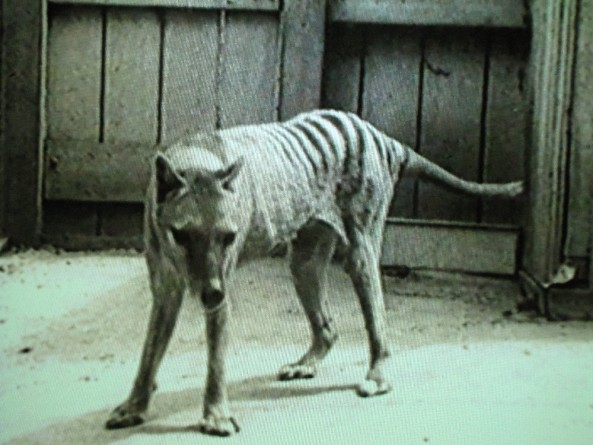
The last Tasmanian tiger, Hobart Zoo, 1930s
What to eat and drink
I whiled away a pleasant Saturday morning at the Salamanca Market nibbling on the product of dozens of artisanal craft, food and wine producers who sell handcrafted cheeses, diary products, berry fruits, charcuterie and an array of seafoods.Tasmaniais traditionally known as “the providore island” and “the apple state”. Local apple farmers sell bags of heirloom apples “tree-ripened, fresh-picked” to hundreds of locals and tourists who throng Salamanca Place. You can also buy handcrafts made from Tasmania’s famous huon pine – and on Sunday there’s a farm gate market downtown.

Salamanca market under the shadow of Mt Wellington, Hobart

Apple sellers at Salamanca Market, Hobart
I ended up in the pubs in the old Georgian warehouses trying many micro-brew beers and ciders – with special dark ales for winter like “the willie warmer”! I did a wonderful half-day walkabout with well-known pastry chef Mary McNeill who runs Gourmania Food Tours. We tasted our way around Hobart’s top local foodie venues.
Starting with a salmon tasting at the Tassal Salmon Shop – one of Australia’s biggest salmon producers – we went on to taste blue-eyed trevella at one of the floating fish ‘ n chips shops in Constitution Dock and fabulous Bruny Island cheeses at Common Ground owned by Matthew Evans, Tasmania’s tv celebrity gourmet farmer. At Wursthaus Smokehouse, we tasted saltbush lamb, smoked emu, wallaby marinated in bush dust, fresh rabbit, Cape Grim beef and Tasmanian goat milk. We lunched on beer bread damper, storm bay squid and Dootown venison sausage at the Brunswick Hotel, one of the oldest licensed pubs Oz (1831). Try wattle-seed braised wallaby pie!

The Drunken Admiral, one of the historic old pubs on the Hobart waterfront
I also visited the oldest brewery in Australia. Cascade Brewery in South Hobart in the shadow of Mt Wellington is one of the top ten attractions in the capital. Founded in 1832, this heritage listed gothic building offers tours, tastings and food and beer pairings. It was acquired by South African Breweries/SAB Miller earlier in 2013.
While you’re in the area the Cascades Female Factory, a Unesco world heritage site is well worth visiting – it is one of eleven sites in Tasmania which fall under the Australian Convicts World Heritage listing of Port Arthur. One in four of the 70 000 convicts transported to Van Diemen’s Land in the first half of the 18th century were women. Rated one of trip advisors top ten things to do in Australia. The Cadbury Chocolate factory, is a big drawcard in the Hobart area! Feeling like Willy Wonka, I set off to explore the length and breadth of the wilder parts of the island.
Getting there
The overnight Spirit of Tasmania ferry from Melbourne to Devonport is a popular way to get to Tasmania from mainland Australia. Qantas and other airlines operate daily short flights from Melbourne and Sydney to Hobart in the south and Launceston in the north. Tasmania is pretty far south. If you went west from Hobart you’d miss Cape Town by a long shot and end up south of Buenos Aires in Argentina.
* Graham Howe attended the Australian Tourism Exchange (ATE 2013) as a guest of Qantas and Tourism Australia. To find out more about new tourist attractions across Australia- see www.australia.com, www.qantas.com and www.discovertasmania.com








